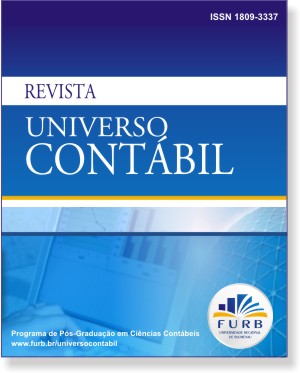ACCOUNTING AND FINANCIAL PERFORMANCE OF INSURANCE COMPANIES IN BRAZIL: A STUDY BASED ON THE DATA ENVELOPMENT ANALYSIS (DEA) FOR THE YEAR OF 2007
DOI:
https://doi.org/10.4270/ruc.20117Keywords:
Performance, Accounting and financial indexes, DEA.Abstract
The goal of this article is to analyze the accounting and financial performance of insurance companies operating in Brazil during the year of 2007, through the use of Data Envelopment Analysis (DEA). For this, were used accounting and financial information available on the 73 largest insurance groups in Brazil from the Conjuntura Econômica Magazine (2008). The information used in the analysis are derived from a factor analysis applied to the original indexes, forming four factors: profitability, management efficiency (use of operating expenses), claims and risk (use of debt). Based on these four factors the DEA-VRS model was applied to consolidate them into a single indicator of accounting and financial performance called Accounting and Financial Performance Index (IDCF). The results show that only eight out of the 73 insurance companies examined present maximum performance indicator (IDCF = 100%). These are presumed to be efficient and serve as benchmarks for other insurance companies, in the quest for improvement in their profitability, management efficiency, claims and risk indicators. Furthermore, the results show that, even if not incisively, the better the position of the insurance company in relation to the size, the worse its position is in relation to accounting and financial performance. Finally, with 10% level of significance, the average accounting and financial performance of the 15 largest insurance companies is lower than the average accounting and financial performance of 15 smaller insurance companies. This shows, for this analysis, the condition of competitiveness of small and medium size insurance companies.
Downloads
Published
How to Cite
Issue
Section
License
The copyright for papers published in this journal belong to the author, with rights of first publication for the journal. As the papers appears in this publicly accessed journal, the papers are for free use, receiving their credit, in educational and non-commercial uses. The journal will allow the use of the papers published for non-commercial purposes, including the right to send the paper to publicly accessed databases.


